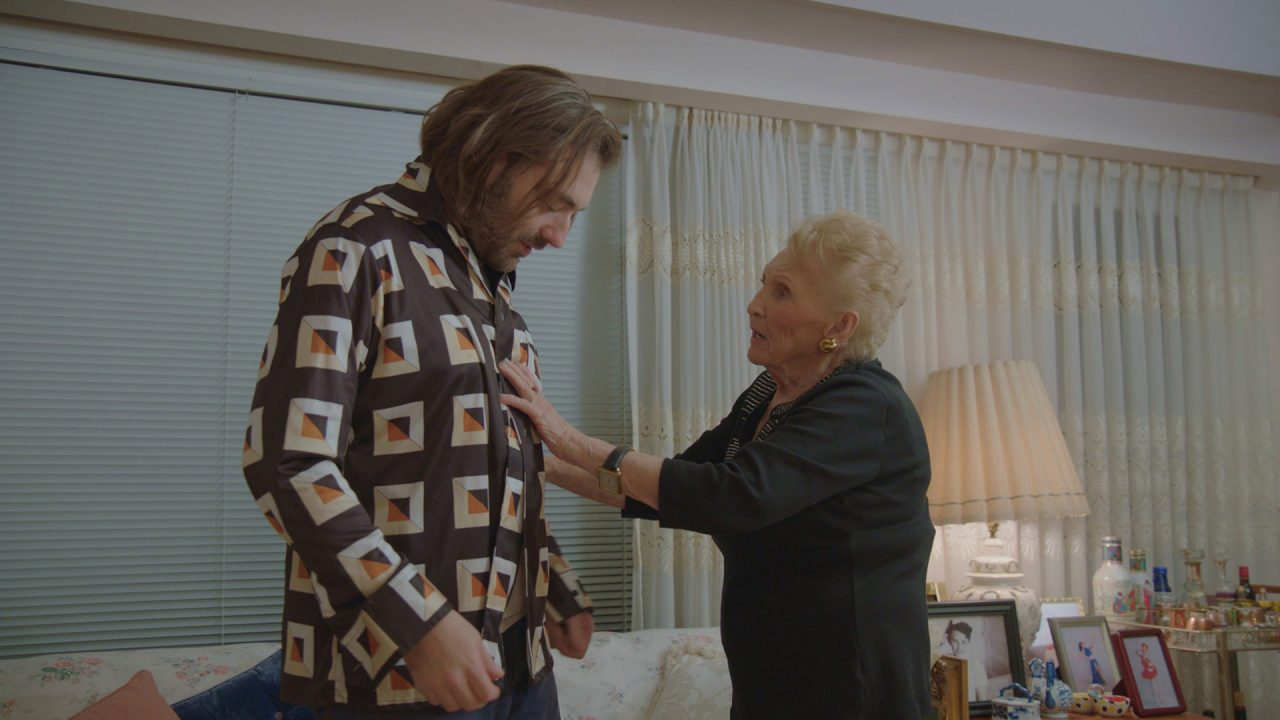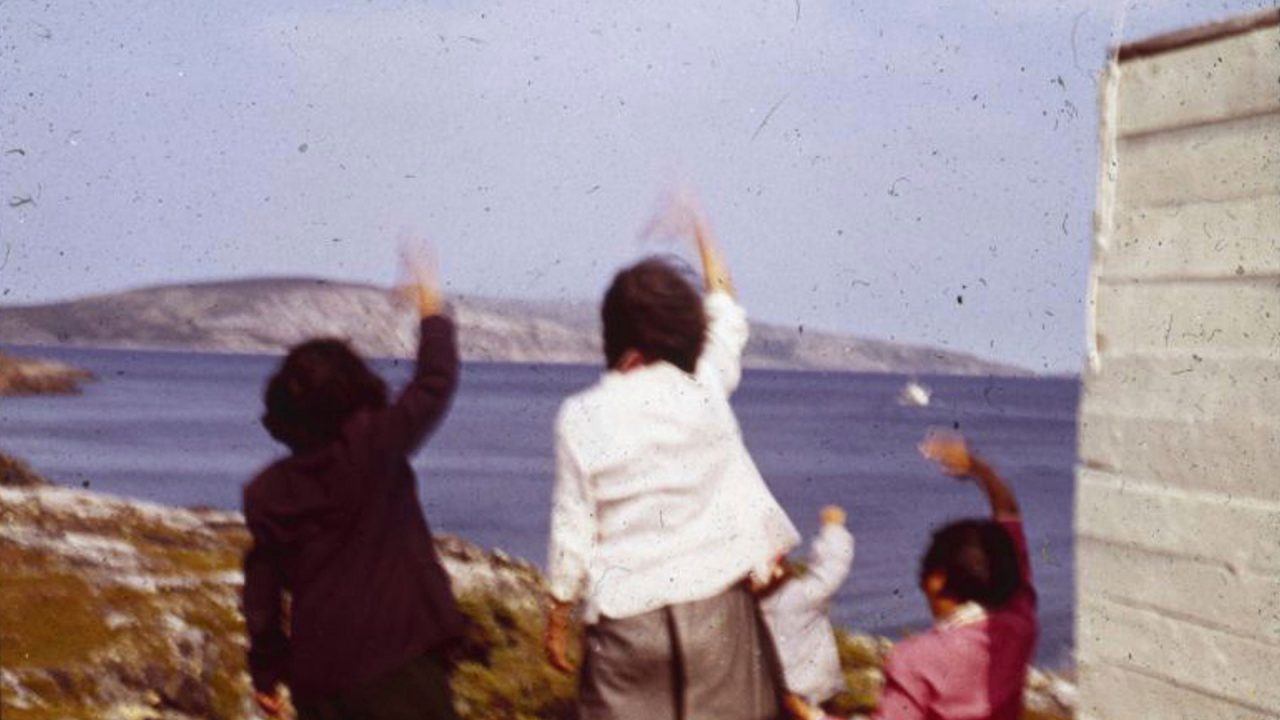
Mini-Lesson for Martha
Mini-Lesson for Martha
Mini-Lesson for Martha
Recommended Ages: 15-17
Martha, Daniel Schubert, provided by the National Film Board of Canada
Warnings: This film includes sensitive subject matter: reenactments of illness and fear in a concentration camp.
Synopsis: Martha is a documentary film that features Daniel, the filmmaker, and his grandmother, Martha. It is the story of Martha’s family and their experience under the Nazis and during the Holocaust. It tells the story of her and her family’s deportation to the ghetto, being on a cattle car and experiencing the horrors of the Auschwitz concentration camp. The audience learns that her and four of her siblings survive, but her mother, father and two younger brothers died during the Holocaust. As the film progresses, we see moments of warmth between Martha and her daughter, and Martha and her grandson. The film includes Martha and her grandson going on a tour of a Holocaust museum. There are poignant moments of conversation between Martha and her grandson where they discuss Martha’s life after the Holocaust, her marriage, her children and her grocery store.
Keywords: Holocaust, History, Grandparents, Eastern Europe, Concentration Camp, Auschwitz
Overarching Question: How can people experience incredible trauma and suffering yet grow to live a meaningful life?
Activity 1: A Normal Life Destroyed
Watch Clip: 3:39-6:50
Whole class discussion
Question: How does Martha’s life before the Holocaust seem “normal”?
Brainstorm: As a class, have students share elements from the film clip. For each provided response, inquire why they feel that is “normal.”
Think Pair Share:
Question: How is Martha’s “normal” life interrupted? What does that mean for her?
Have students write at least three answers on sticky notes. They will then pair up with a partner, where they will organize their notes in a way that shows all the similar parts of their responses and all the parts of their responses that are different. This can be done using a t-chart that looks like this:

Students should complete an exit card containing the following question:
Make a prediction. Do you think Martha will be able to lead a positive and meaningful life, despite experiencing this trauma and suffering?
Summary:
The goal of this activity is to introduce students to Martha’s life in a way that makes them understand her background, and to comprehend that it was quite “ordinary.” They should understand that she and her family posed no danger to society and, by extension, Jews in Nazi-occupied Europe were no threat to society.
This activity is focused on students practising their note-taking skills and making predictions based on their observations.
Activity 2: From Polarization to Extermination
Watch Clip: 7:02-9:45
Small Group Work
Provide students with the document that can found at: https://museeholocauste.ca/en/resources-training/ten-stages-genocide/
They can be given the whole document or only those sections that discuss the stages from polarization, preparation, persecution, extermination.
The French translation can be found here: https://genocide.mhmc.ca/fr/genocide-etapes
Divide the class into four groups and assign each group one of the stages of genocide (polarization, preparation, persecution, extermination). Have each group read their section and take notes from the section that defines their term.
Once the groups are done, show the class the video clip from the film. Have each group record information from the clip that serves as an example of the term with which you have provided them.
Have the students organize their notes into a short presentation and have each group present their definition and describe the examples they found in the video clip.
After all the groups have presented, synthesize the information by guiding a discussion through two key questions:
- How does polarization lead to preparation, which then leads to persecution, which in turn leads to extermination? What is the connection from one to the next?
- What could be done by regular civilians or groups of regular civilians at each stage to prevent things from getting even worse for the victims and for society?
Summary:
The goal of this activity is to have students explore and then apply some aspects of an academic document to the film.
This activity is focused on having the students derive meaning out of the document and make connections between certain aspects of the article and the film. Students also will practise their oral communication skills in small group work and in a short presentation to the class.
Activity 3: A Meaningful Life
Watch Clip: 16:50-18:51
Organizing and Outlining
In this activity, students will consider the entire film, but will specifically focus on Martha’s life after the Holocaust. They will consider a quotation from the film, create a set of notes, organize those notes and create an academic outline, which can then be used to prepare an essay or presentation.
The focus will be this statement from Martha toward the end of the film: “…and that was my life: to see that my children could have whatever they want.” Considering Martha’s experience during the Holocaust, does this reflection show that she lived a meaningful life?
Have students record notes from the film and Martha’s experience, from their own thoughts, and/or from any further research you would like them to do.
Their initial set of notes can be simple jot notes.
They should then organize their notes in a two-column graphic organizer that looks like this:

The “YES” column will indicate evidence that proves that, in the students’ opinions, she did lead a meaningful life, and the “NO” column will indicate that, in the students’ minds, she did not lead a meaningful life.
Once the students have finished putting their notes in the columns, they should judge which column has the best response. This can be a combination of the amount of evidence (number of points) as well as the quality of those arguments. This decision will form their base argument for the outline.
Working within their chosen column, students will use different colours to connect the relevant ideas to one another.
By highlighting and connecting ideas, students will develop their thesis and conclusion. Using the connected points in their column, they will then put it into outline form, incorporating the three subtopics they’ve identified with colours.
Have students get into small groups to share their outlines with their classmates and get peer feedback on their ideas.
Summary:
The goal of this activity is to get students to practise their note-taking skills as well as their ability to make connections between disparate pieces of information. It assists them with organizing their ideas, gathering evidence and streamlining it towards making a strong thesis.
This activity is focused on getting students to work through the bulk of the writing process, from note-taking to making an outline.
Take Action: Create a Workshop
Students can work in groups to create a workshop to deliver to other classes in their school, educating them about the Holocaust using the film Martha.
To begin, the students should set their own goal and focus for the workshop.
They should consider what information to build into the workshop.
They should then plan the lesson to decide how to present this information to the class.
Further Resources:
United States Holocaust Memorial Museum (ushmm.org)
Michael Anthony is a secondary-school teacher in the Toronto District School Board. He is a veteran teacher of History, Politics, and Social Justice, as well as the Genocide and Crimes Against Humanity course. He has been a Holocaust Educator for over 20 years, something that is ingrained in him as his Great-Grandparents, Fritz and Lily Steiner, were killed by the Nazis in Auschwitz. His writing was recently published in the opening chapter of Samuel Totten’s book Teaching about Genocide: Insights and Advice from Secondary Teachers and Professors (Volume 2).
Pour lire cet article en français, cliquez ici.
Discover more Mini-Lessons | Watch educational films on NFB Education | Watch educational playlists on NFB Education | Follow NFB Education on Facebook | Follow NFB Education on Pinterest | Subscribe to the NFB Education Newsletter



